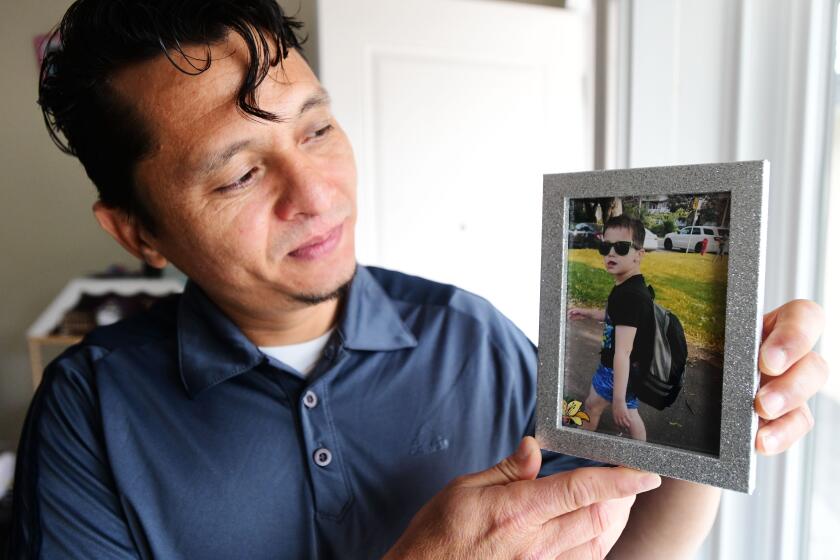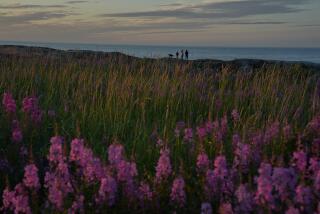A U.S. town marooned at the tip of a Canadian peninsula

POINT ROBERTS, Wash. — In 1846, after decades of haggling, American and British diplomats finally agreed on a border between the U.S. Northwest and what would later become Canada.
Listen to this episode of The Times: Apple | Spotify | Stitcher | Google
Following the 49th parallel west from the Rocky Mountains almost to Vancouver Island, the boundary sliced straight across a peninsula that jutted south from Canada, leaving 4.8 square miles on the American side.
Point Roberts, Wash., long prospered as an appendage of Canada. Its economy thrived on sales of gasoline, groceries and alcohol at prices considered a bargain by Canadians, whose frequent visits helped make the border station one of the busiest crossing points between the two countries.
The 1,100 Americans and Canadians who lived here thought nothing of crossing into Canada for work, school or errands or to get to the U.S. mainland.
Then on March 21, 2020, in response to the pandemic, U.S. and Canadian officials abruptly closed the entire border to nonessential travel — squeezing the peninsula like a tourniquet.
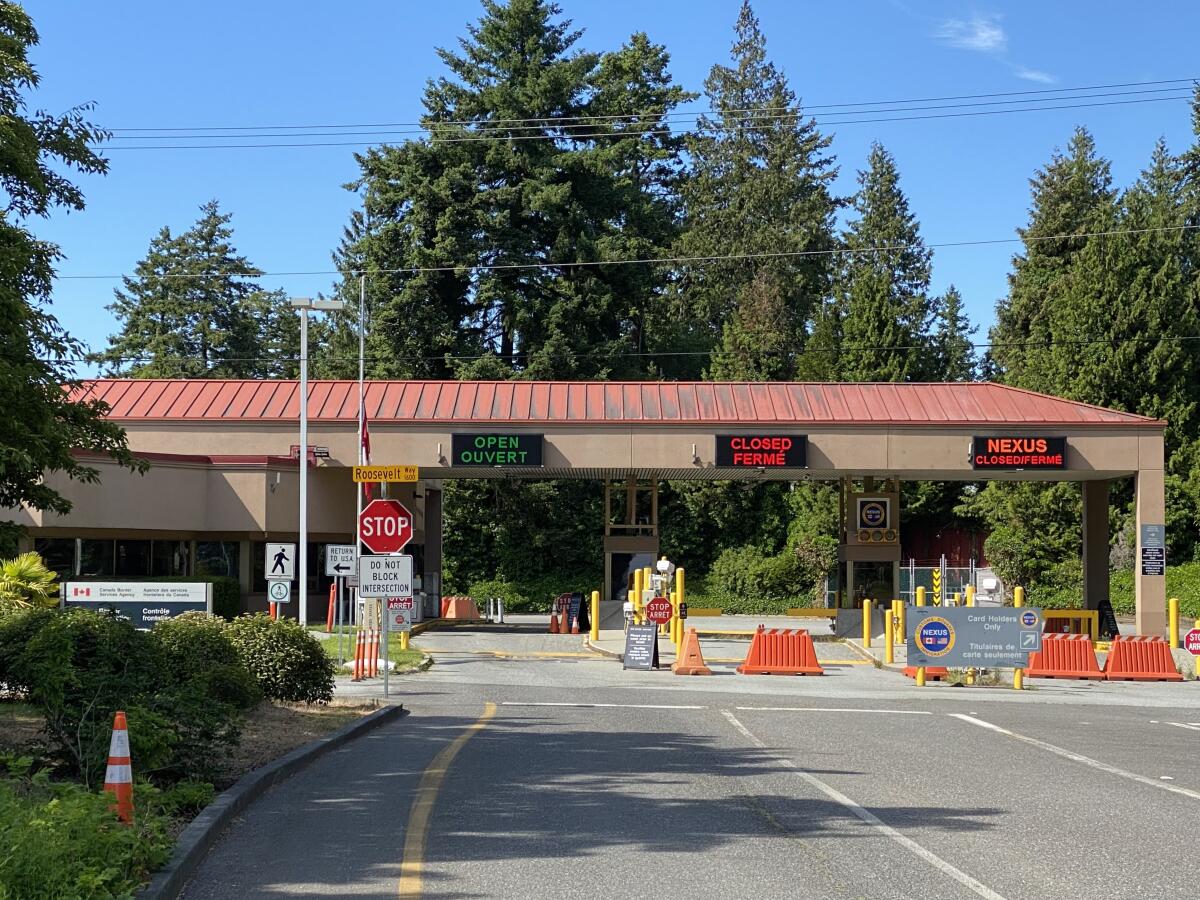
How, Point Roberts residents wondered, would they see doctors or pick up prescriptions given that they had no physicians and no pharmacies? How could they get children to school once in-person instruction resumed, given their lack of classes beyond third grade? How would they take pets to the vet?
Many families simply left Point Bob, as people affectionately called the promontory named for Capt. Henry Roberts, a British explorer.
When Brady and Lori Nelson realized their two daughters would not be able to attend their school in Tsawwassen, British Columbia, when it reopened, they moved to Spokane on the Washington mainland, where Brady Nelson grew up.
The relocation meant that he would have to commute an hour by commercial plane to his job flying airliners out of Vancouver International Airport. Real estate was expensive in Canada, and the family preferred living in the United States.
“It was very tough because we left behind my father, who as our daughters’ grandfather was very involved in their life,” he said.
As the population fell below 1,000, the town’s 60 fuel pumps sat mostly idle: Most people had nowhere to drive to.
At the Shell station on Tyee Drive, co-owner Chuck Laird learned to toss pizzas to serve to hungry locals.
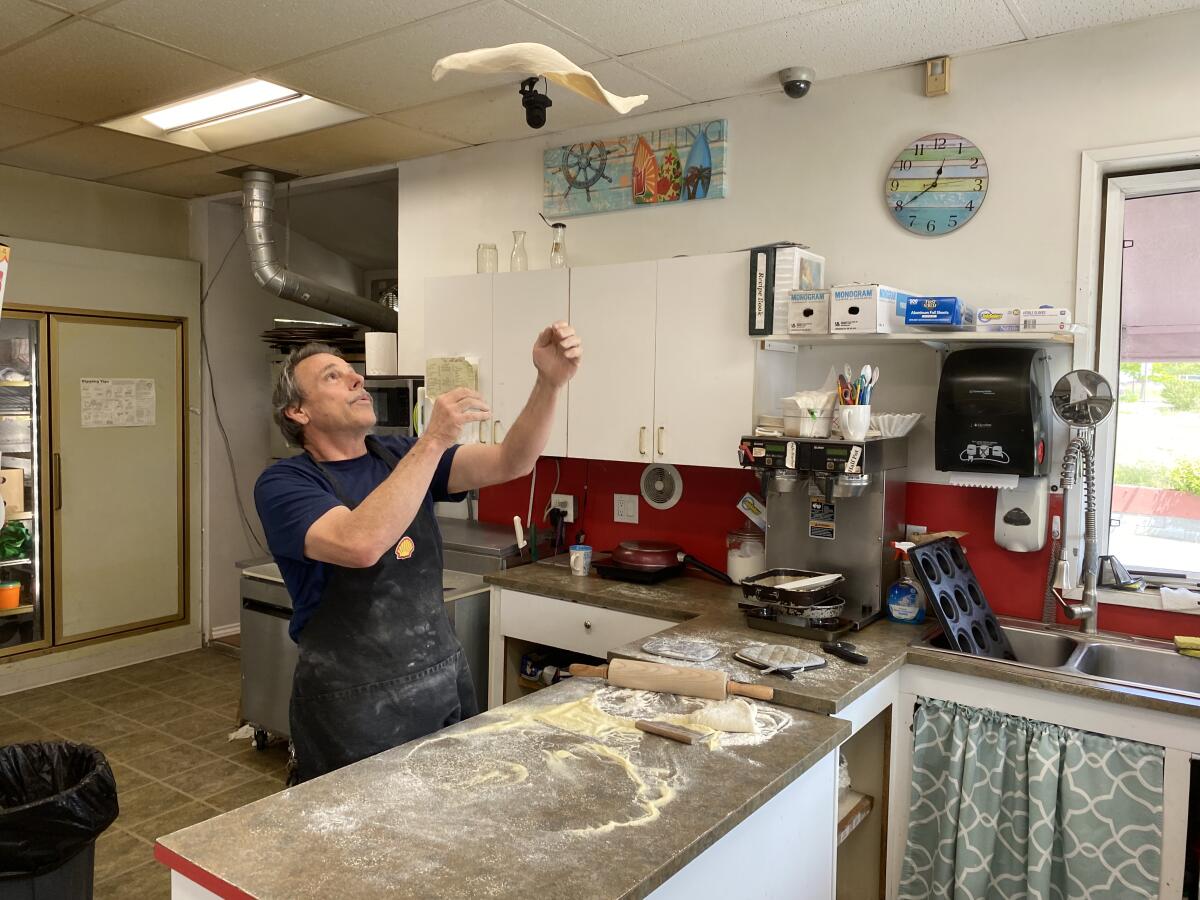
Sylvia Schonberg, a 90-year-old resident, played the organ at Trinity Community Lutheran Church until the pandemic shut down services. She said the stillness evoked memories of her childhood on a farm started by her grandparents, who were among the point’s original Icelandic homesteaders.
As the population continued to shrink — it would eventually reach about 800 — Neil Ingermann, the lone sheriff’s deputy in Point Roberts, found himself with little to do.
“I’ve gone a couple of weeks at a time without having a call that had to be handled in person,” he said.
When he took the job in January 2020 — a transfer from Bellingham, Wash., a 50-mile drive through Canada — he never anticipated boredom. Single and 28, Ingermann had joined a health club and a hockey league in suburban Vancouver and anticipated an active social life in the cosmopolitan city.
Now he’s stuck in Point Roberts like everyone else. “I decided I’m not going to re-up for another two years here,” he said.
Family separations don’t occur only at the Mexican border, as Carlos Rivera and his young son discovered when they crossed into the U.S. from Canada.
Lack of business did in the Breakers, a nightclub that had managed to survive even after 1986, when British Columbia lifted its ban on Sunday alcohol sales and thousands of Canadians ended their weekly border treks to drink.
Two restaurants and a wine shop closed. An art gallery and a bike shop shut, as well as a Banner Bank branch. As hundreds of boats pulled out, the point’s marina went up for sale.
The Bald Eagle Golf Club also closed, leaving Supt. Rick Hoole struggling to mow the 18-hole course. He invited residents who helped him weed bunkers and water greens to join him for a round of golf each Tuesday.
Before the border closed, Best Time RV based about 300 Winnebagos, Jeeps and vans in Point Roberts, renting them mainly to vacationing Europeans who flew into Vancouver.
The location saved on taxes and overhead and dodged a Canadian law that prohibited one-way rentals on cross-border trips — until the border closure.
“It killed us,” said Neal Klass, Best Time’s vice president.
The company hired drivers to move all the vehicles to Las Vegas, getting permission to pass through Canada with other commercial traffic.
The border shutdown also dried up one of Point Roberts’ niche industries: the six parcel depots that enabled Canadians to zip across the border to avoid duties and international charges on items ordered from Amazon and other U.S. retailers.
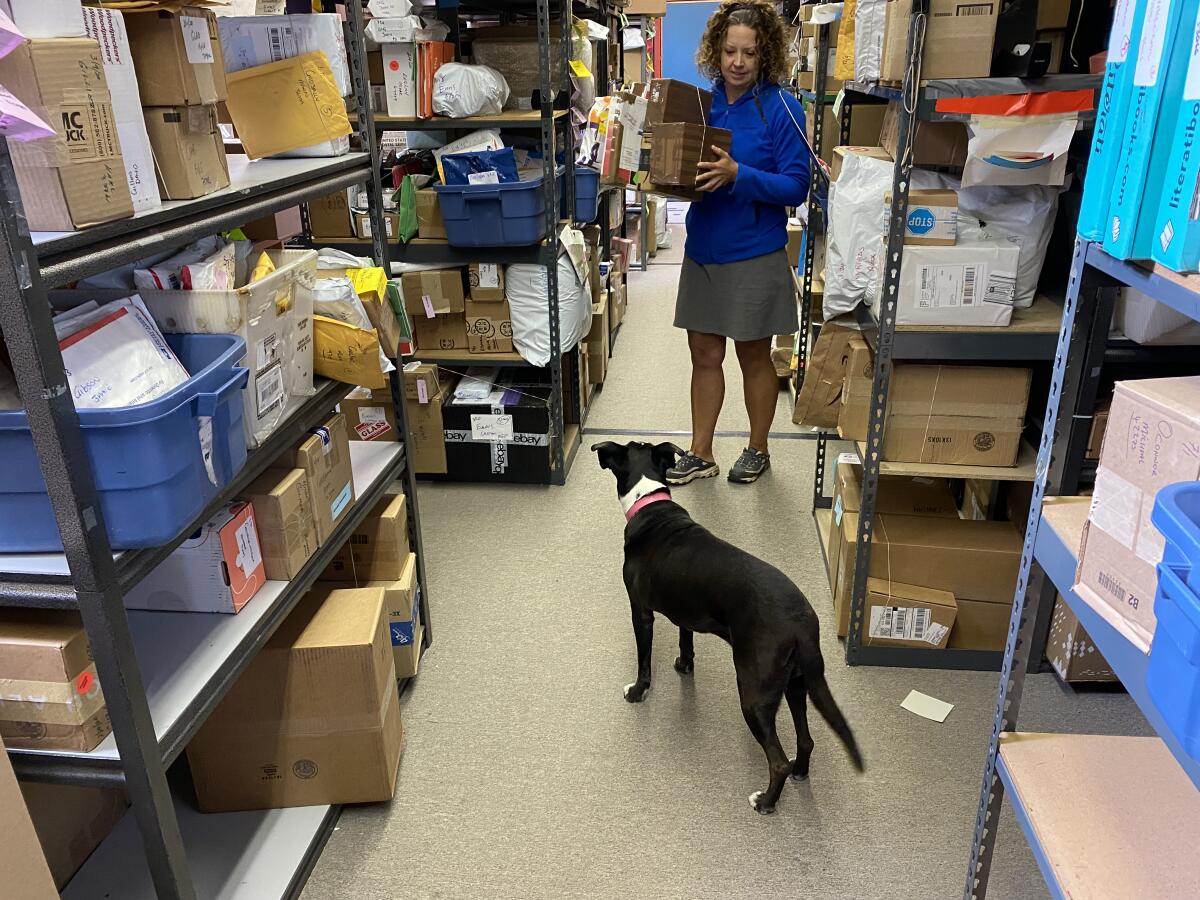
Thousands of packages have stacked up in the warehouses. Point to Point Parcel manager Beth Calder fielded calls from customers as storage charges mounted.
“Some of them say, ‘Hold onto it; I’ll wait for the border to open,’” she said. “I’m like, ‘Good luck.’”
Last July, Fire Chief Christopher Carleton wrote to President Trump and Canadian Prime Minister Justin Trudeau asking for relief.
“Point Roberts’ citizens are living under the effective equivalent of house arrest, with only the most restricted access to the basics of life supplied by the world outside,” he wrote.
Washington Gov. Jay Inslee wrote Trudeau the next month, suggesting that the Canadian government issue permits allowing Point Roberts residents to drive between their town and the mainland United States as long as they didn’t stop in Canada.
But Canadian officials were unmoved. That October, they made exceptions for four other isolated border towns, but they spurned Point Roberts, arguing that its residents “can access the necessities of life within their own community.”
That was largely because the International Marketplace, the only grocery store in Point Roberts, remained open. The owner, Ali Hayton, said she couldn’t bear to close the store, built big enough to handle 8,000 Canadian customers a week, despite losing tens of thousands of dollars a month.
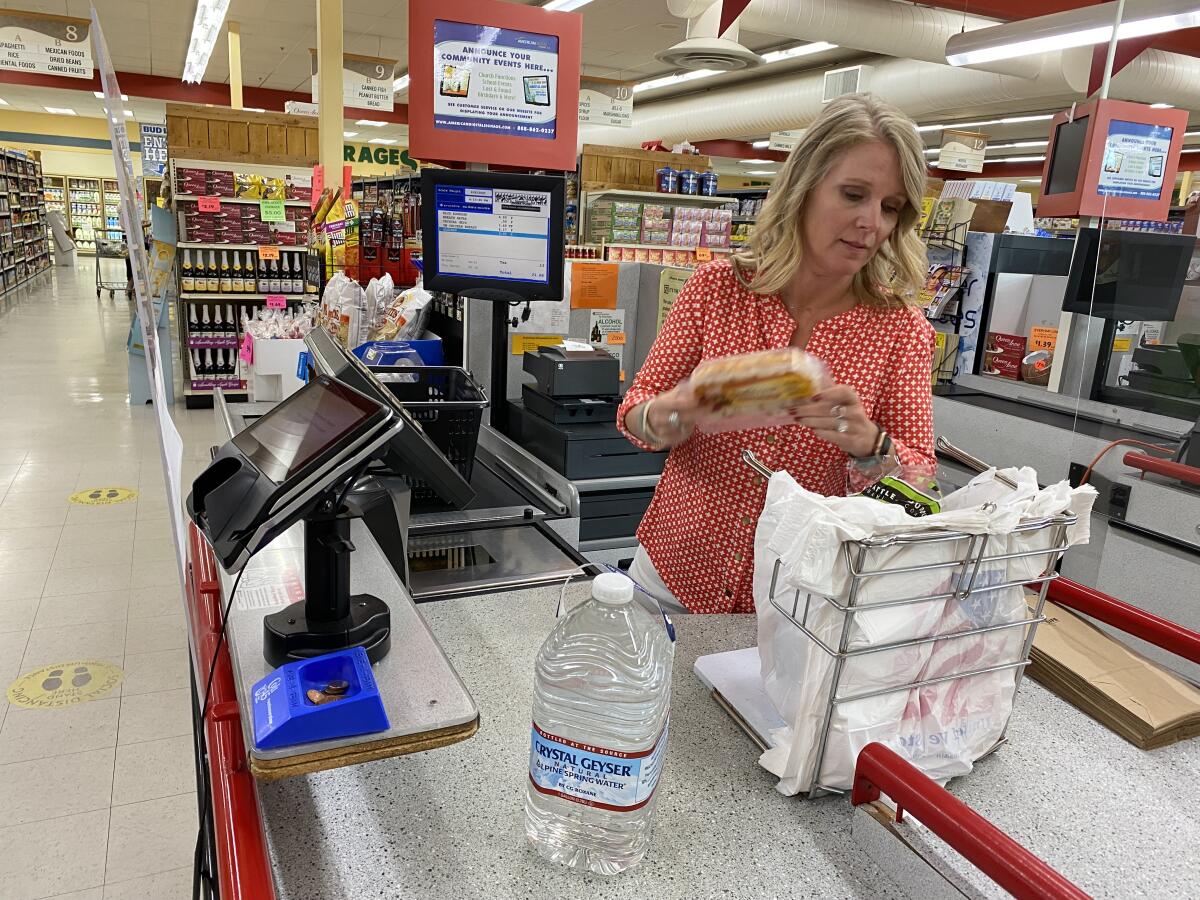
As an emergency measure in August, the Port of Bellingham repurposed a dinner-cruise ship to launch a twice-a-week ferry service to Point Roberts. The trip, two hours each way, is free, but doesn’t solve much because the ship can’t carry cars.
At the border, what qualifies as an essential crossing is open to interpretation by Canadian agents.
In June, when Point Roberts suffered its first fatal car accident since 1972, Canadian firefighters jumped over a concrete barrier to help out.
But it was a different story when Pamela Robertson — a South African who had moved here to be near relatives in Canada, where she was denied residency — came down with a severe toothache.
Twice in April, she drove to the Canadian border station and pleaded with agents to let her through. Her dentist was just minutes away.
“You have to be dying for it to be essential,” she said a guard told her.
On her third attempt, an agent relented. But before seeing the dentist for the abscessed tooth, Robertson, 71, had to quarantine for 14 days.
“Point Roberts’ citizens are living under the effective equivalent of house arrest, with only the most restricted access to the basics of life supplied by the world outside.”
— Christopher Carleton, Point Roberts fire chief
By the 12th day in her daughter’s suburban Vancouver basement, she said, “the whole side of my face swelled up and I got a fever. He had to extract the two teeth around it.”
When Maggie Mori, who lives in Tsawwassen, received a notice that the water meter at her cabin in Point Roberts was spinning, she called the border station. No luck.
“It just kills my husband that he can’t go down and look at it,” she said. “He’s a plumber.”
The Moris are among hundreds of Canadians who own second homes on the U.S. end of the peninsula and treasure the community for its beaches, bald eagles and views of snow-capped peaks and passing whales.
Maintenance has been a major problem as deer graze in overgrown yards.
Jeanette Meursing and her sister Diane Thomas, who was visiting from South Dakota when the border closed, have been mowing lawns and weed-whacking for about 17 absent Canadian families at no charge. In their 70s, the good Samaritans drew the line at one homeowner’s request for grass seeding.
“We’re not landscapers,” Meursing said. “And when the border opens, we’re sending them all an email: ‘We’re done.’”

When that will happen remains unclear. Last week, Trudeau extended the border restrictions until at least July 21.
While Canadian officials are considering relaxing restrictions for people vaccinated against COVID-19, Trudeau has said the border will not reopen until 75% of Canadians have had at least one dose and 20% are fully inoculated.
As of this week, those figures were 64% and 13%, far behind the United States, where 45% of the population is fully vaccinated.
After Trudeau extended the closure, Hayton announced she was shutting down her supermarket next month.
“From Day 1, I have said that I didn’t want a handout, I just wanted my customers back,” she wrote in a news release. “Now, fully 15 months later and with no end in sight, I am finally fed up and begging for help.”
Residents hope that the prospect of Point Roberts becoming a food desert will leave Canadian authorities no choice but to lift border restrictions.
In the meantime, people find ways around the forced isolation.
Monument Park, which marks the 49th parallel on the western edge of the peninsula, offers a bilateral meeting area.
On a recent sunny day, Teresa Pope, a laid-off package depot manager, and two Point Roberts friends arranged folding chairs on a lawn at the park and sat facing north, their feet grazing the U.S.-Canada line, which was marked by metal stakes.
Across from them on the Canadian side were Kay and Rod Wilen, Pope’s aunt and uncle. Security cameras monitored the get-together, and a pair of U.S. Border Patrol agents came by to chat and check the seating alignment. An international incident was avoided.
Two days later, Julia Carlson, a Washington state notary public, showed up at the park and shook hands across the border with an American couple living in Canada. She stamped documents allowing them to refinance the mortgage on a house they own in the United States.
“If I entered the U.S. to do this, I would have to get a negative COVID test and then spend 14 days in isolation back here in Canada,” said the husband, Khue Le.
The border closure has gotten many people thinking about how little sense it makes that Point Roberts is even part of the United States.
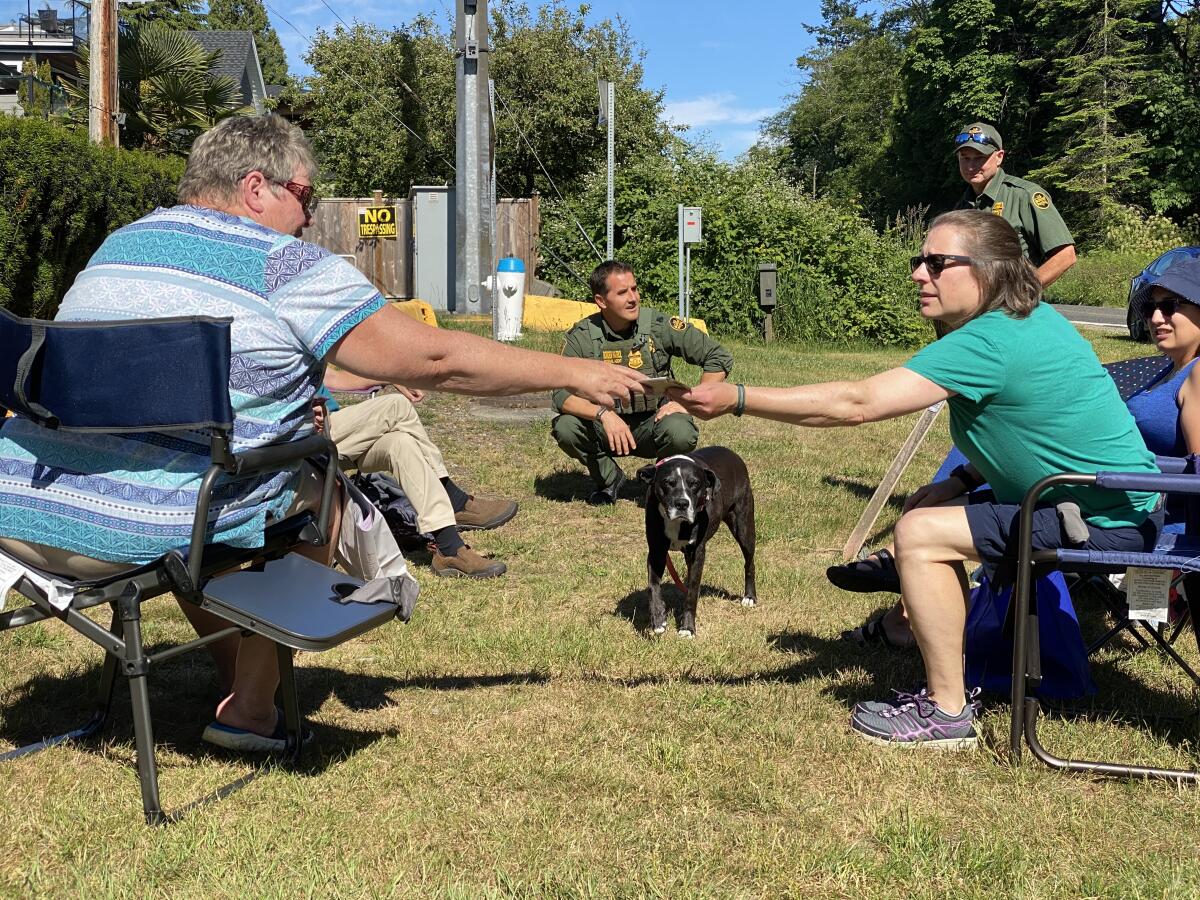
Historians had long assumed that 19th century diplomats had no idea that the border they agreed on in the Oregon Treaty created what geographers call an “exclave,” a piece of a country separated from the whole.
But at a June 15 ceremony marking the 175th anniversary of the pact, Mark Swenson, a tech consultant and amateur historian, announced that he had some news.
“Ladies and gentlemen, that is not true,” he told the small crowd gathered outside the town history museum.
Swenson explained that he had found journals showing that members of a U.S. Navy expedition preparing for the negotiations had spent days surveying the peninsula. He said they viewed the point as strategic territory because of the access it would one day provide to the major city they predicted would be built nearby.
His conclusion, after examining the evidence: “Point Roberts is not a mistake.”
More to Read
Sign up for Essential California
The most important California stories and recommendations in your inbox every morning.
You may occasionally receive promotional content from the Los Angeles Times.
